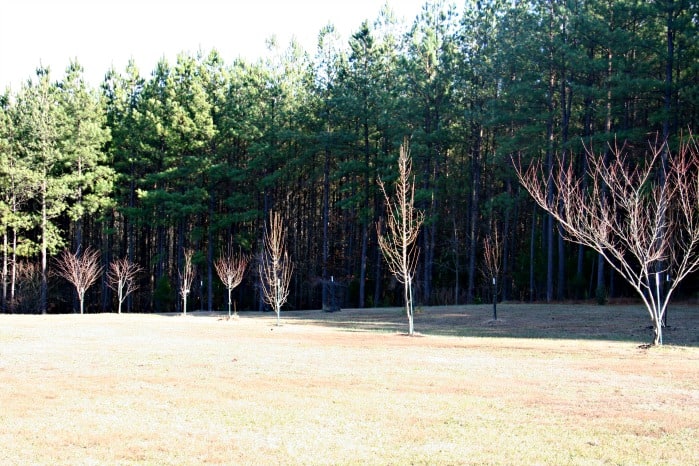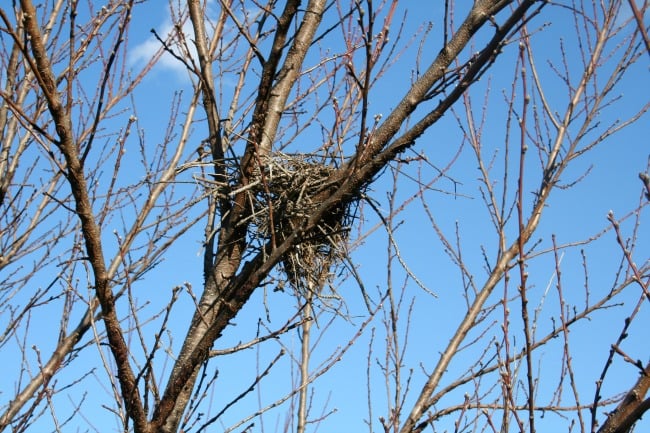Pruning orchard trees is a task we undertake each winter, before the sap begins to run and the blossoms open. We prune the little suckers off the base of each of the trees where the root stock always seem to want to overtake the graft above. We prune up the branches, removing any winter-damaged branches, and shape the trees carefully. We inspect the branches and remove any that seem damaged by insects, too.
It’s important that when you prune trees, you clean and sterilize your pruners in between each tree. It’s like operating on a person; the doctor sterilizes his scalpel between patients so he doesn’t pass germs from one person to the next. We do the same with the trees. Many of our apple and pear trees are touched by fire blight, a disease that can rapidly overtake and kill trees. It’s a bacteria disease spread by beetles, so as you can imagine, it’s almost impossible to eradicate from the home orchard. Available treatments for fire blight are all intended for commercial orchards, and they’re priced accordingly. Some horticulturists say to leave it alone, other say to prune it out. We’ve tried both methods and found that for our orchard, pruning it out carefully while the tree is dormant seems to work best. We dip the pruners in rubbing alcohol between each cut, even on the same tree, to prevent spreading the blight. Thankfully, we seem to have caught most of the blight in time, because we didn’t see much of its effects today. We did see tons of damage from the cicada infestation last year; they cut and scrape the branches to lay their eggs for the next 17 year cycle. Another thing to look forward too…(sarcasm intended).
Pruning orchard trees takes about one to two hours twice a year. For me, it’s almost like meditation. It is wonderful to get outside into the fresh air even in the middle of winter.
I took a few pictures of the orchard in wintertime. I think that fruit trees are some of the most beautiful trees around. We have apple, pear, plum, peach, cherry and apricot trees. So far, we have only tasted peach, apple and pears from our orchard. It’s young yet.
We have time.







[…] be starting a home orchard. If you have ever wanted to grow fruit in your backyard, starting a home orchard and growing apples, pears, peaches and more is […]